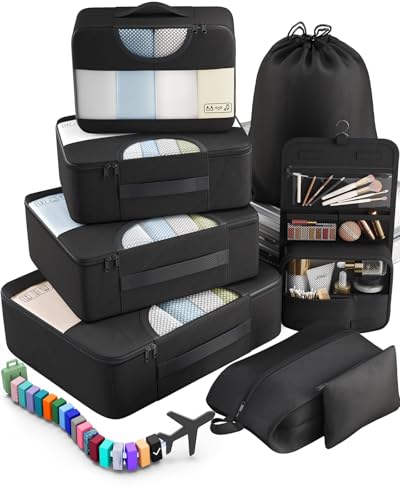In Afghanistan, they use Type C and F power plugs and outlets. The voltage is 220V, and the frequency is 50Hz.
So, you’ll need a travel adapter in Afghanistan. Their plugs and outlets are different from the Type A and B ones we use back in the States.
Quick Overview of the Plugs in Afghanistan:
- Plug type in Afghanistan: C and F
- Standard voltage: 220V
- Frequency: 50Hz
- Need a travel adapter? Yes, you do need a travel adapter
- Need a voltage converter? May be required for certain electronics
- Recommended plug adapter: Vintar Universal Travel Adapter Kit
This information is gathered from local electricity agencies, IEC standards, and the experiences of travelers who’ve used these outlets abroad.
The Only Travel Adapter You’ll Need in Afghanistan
A dead phone or laptop abroad? No thanks. We don’t sell travel adapters, but we’ve done the research to find the best one for Afghanistan—based on voltage, plug types, safety, and charging speed. This one is the top pick:
Recommended Travel Plug Adapter
by 1,000+ travelers on Amazon
If you’re traveling or already at your destination and missing a power adapter, you’ll probably be fine—most airports or stores have them. But bringing your own from home means less stress, better quality, and no need to settle for whatever’s on the shelf.
People going through Afghanistan also visit nearby countries like Tajikistan, Pakistan, and Iran. Plug types may vary between countries.
Power Outlets in Afghanistan
In Afghanistan, they use Type C and F power plugs and outlets.
Type C

Type C outlets have two round prongs and no grounding pin. Type E and F plugs usually fit too, but grounded plugs will need an adapter.
Type F

Type F outlets have two round prongs and grounding clips on the sides. Type C and E plugs will also fit.
Do You Need a Voltage Converter?
If you’re traveling to Afghanistan, you’ll probably need a voltage converter. The U.S. uses 120V, but the voltage in Afghanistan is different, meaning your electronics won’t work safely without one.
Always make sure to check the input voltage label on your device before using it overseas. If it states “100-240V, 50/60 Hz”, your device supports multiple power systems and won’t need a converter. Most phones, laptops, tablets, and personal care electronics fall into this category.

Which Travel Devices May Need a Converter?
Not sure which voltage converter to get? Take a look at the best-rated ones right here.
| Device | Need Converter? | Notes |
|---|---|---|
| Phone | ❌ No (usually) | Most modern phone chargers are dual voltage (100–240V) |
| Laptop | ❌ No (usually) | Check the power brick label for 100–240V |
| Hairdryer | ✅ Yes (often) | High wattage; many models are not dual voltage |
| Electric toothbrush | ⚠️ Check voltage | Some models are 110V only |
| Camera / DSLR | ❌ No (usually) | Most chargers are dual voltage |
| Power bank | ❌ No | Charges via USB, adapter is enough |
| Electric shaver / trimmer | ⚠️ Check voltage | Older or cheaper models may not support 230V |
| Tablet / iPad | ❌ No | All models are dual voltage |
| Portable fan | ✅ Yes (sometimes) | Many models are not compatible with 230V |
| Game console | ⚠️ Check voltage | Newer consoles like PS5 and Xbox are often dual voltage — check to be sure |
| Bluetooth speaker | ❌ No (usually) | Charges via USB |
| E-reader (Kindle, etc.) | ❌ No | USB charging only, no converter needed |
Top Travel Essentials to Pack
Besides the right plug, a few other items can make your trip run more smoothly. These practical travel tools help you stay organized, avoid stress, and travel lighter.
Digital Luggage Scale
Packing Cubes
Power Bank
More About Afghanistan
Afghanistan may often be in headlines, but dig deeper and you find one of the most geographically wild and culturally rich places on Earth—from the high peaks of the Hindu Kush soaring past 20,000 ft to bone-dry deserts and lush valleys.
It’s where poetry still thrives—Thursday nights often end in jam sessions of spoken word or music, and Nowruz, the spring festival, draws massive crowds with tulip-themed celebrations. History buffs can wander ancient citadels, Soviet-era museum exhibits, Silk Road ruins, and secure a sense of connection through heritage routes like in Bamiyan and Wakhan.
Right now, tourism’s in a delicate restart: the Taliban has opened up more, and thousands of travelers came earlier this year—mostly walking heritage trails and visiting architectural sites—though advisories still warn of serious risks. If you’re that traveler craving raw landscapes, genuine culture, and vast layers of history, Afghanistan holds an unmatched sense of discovery—but you’ve got to tread smart, respectful, and cautious.




